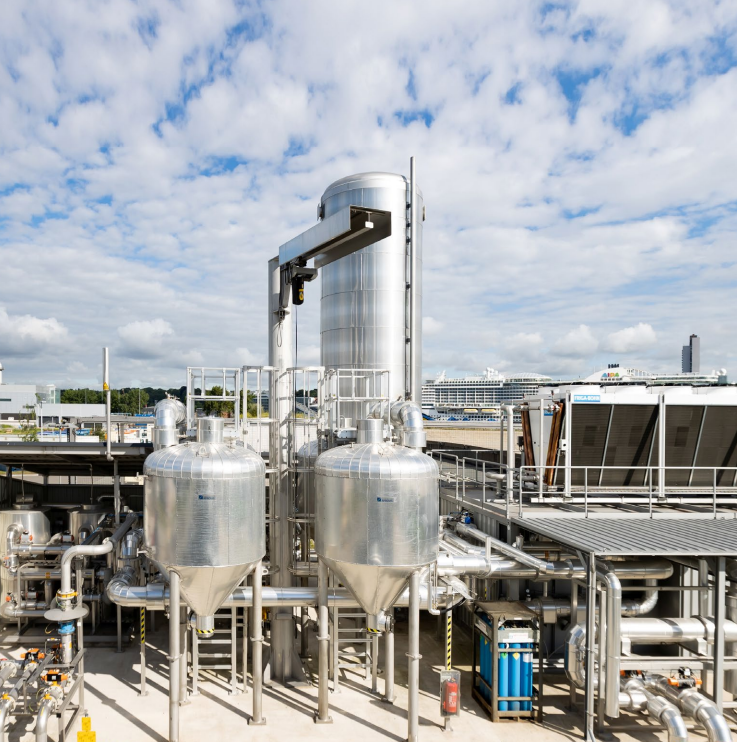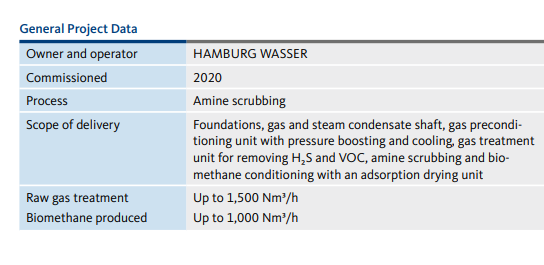Hamburg / Germany
Hamburg / Germany
Digester Gas from Sewage Treatment Supplying Hamburg with Electricity

A sustainable energy concept enables the Hamburg waste water treatment plant not only to fully cover its electricity and heat requirements on a self-sufficient basis, but also to help make Hamburg’s energy supply carbon neutral. One component is a unit for upgrading gas from sewage sludge digesters to make biomethane.
Since 1990, HAMBURG WASSER’s sewage treatment plant in the port of the Hanseatic city has evolved from the largest consumer of energy in the municipality to a significant supplier. On theway to climate neutrality, the company is harnessing not only wind and solar power, but also a resource created by its own daily business: sewage sludge. Prior to thermal treatment, it rots in digesters under anaerobic conditions to produce digester gas. Part of this is converted into electricity and heat, while part is upgraded to natural gas quality and fed into the city’s supply grid.
Skills to Meet Special Requirements
Digester gas treatment places heavy demands on the technology. Firstly, due to the challenging composition of the inlet gas; secondly, its nominal volumetric flow rate fluctuates between 600 and 1,500 Nm³/h. It also requires special corrosion protection, because in the maritime operating environment the gas upgrading equipment is exposed to high levels of humidity and emissions from the sewage treatment plant. Kanadevia Inova drew on its many years of experience in gas upgrading and plant technology to deliver an economical, fit-for purpose solution for this use case as well. With the required flexibility in treatment capacity, the pressureless amine scrubbing process produces methane gas or biomethane from the digester gas: at the heart of the installation, a scrubbing column, an amine solution trickles in the opposite direction to the digester gas. It separates out the carbon dioxide (CO₂) contained in the gas by absorbing methane, which is removed at the top of the tower. It is upgraded to natural gas quality to be fed into the natural gas grid, odorised and passed on to the feed-in station at the requisite pressure. Meanwhile, the used amine scrubbing solution is regenerated using heat for reuse in the process.
The plant has been surrounded with weather protection and roofing to keep it free of environmental and emission-related influences. The surfaces of these protective elements are adequately treated, as are the components of the outdoor installation.
Adding Value to the Site and the City
HAMBURG WASSER started operating a gas upgrading system with a capacity of 350 Nm³/h on the site of the sewage treatment plant back in 2011. The infrastructure for connecting to the gas grid could already be used. With the second, higher-performance plant built by Kanadevia Inova, the quantity previously treated has been increased almost threefold. By using biomethane to replace fossil natural gas, it is calculated that 5,700 households can cover their annual heating energy needs and save about 12,000 tonnes of CO₂ a year.
